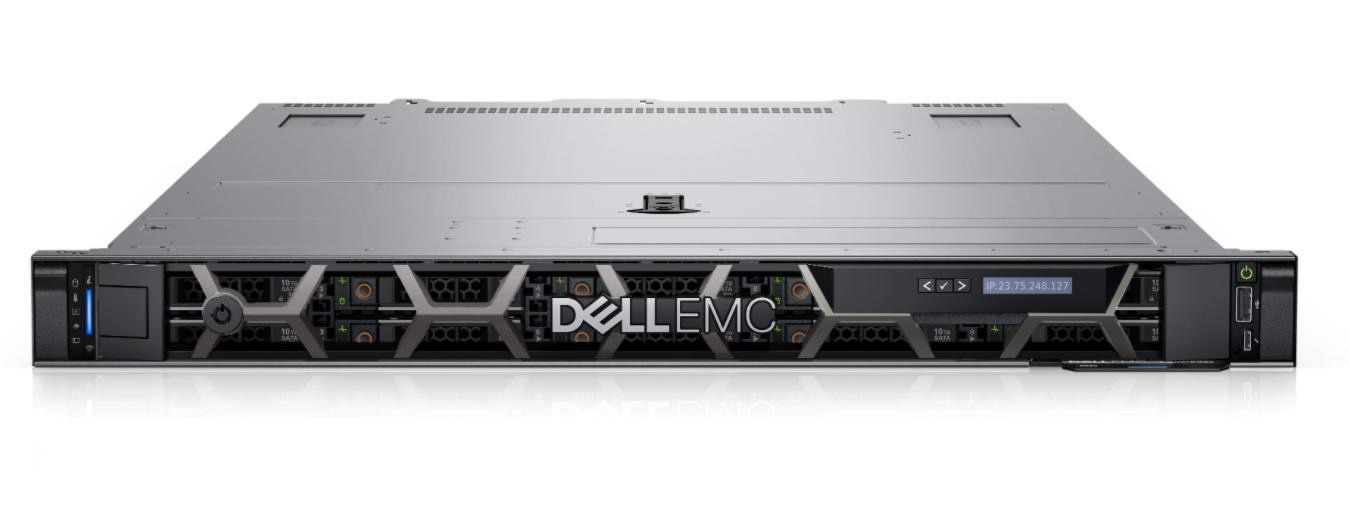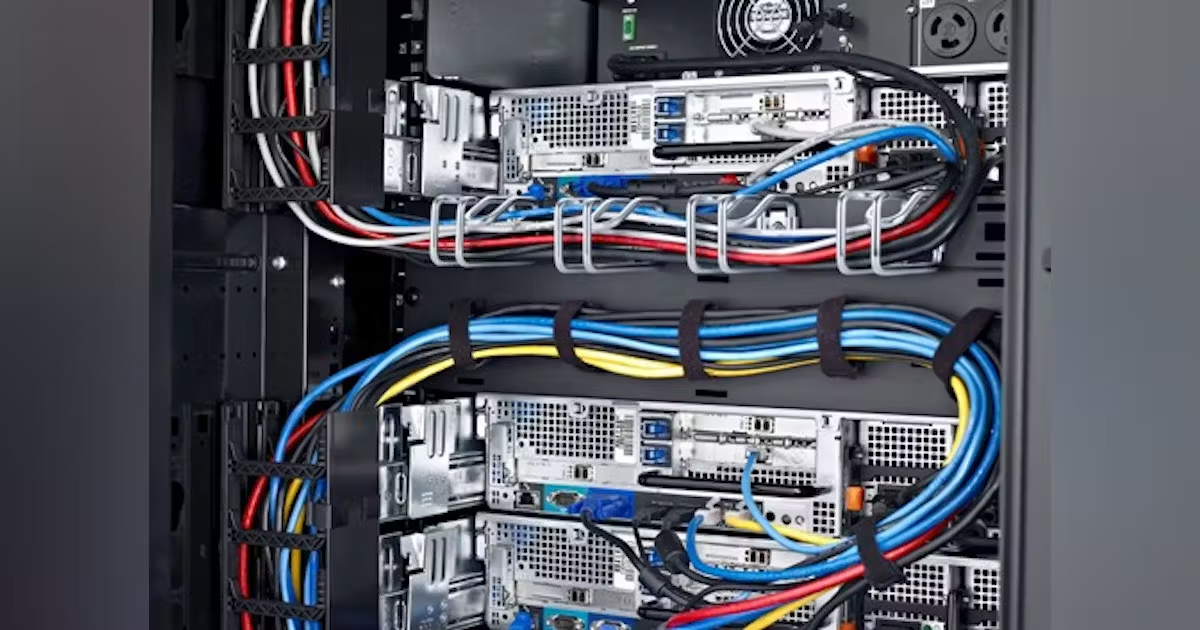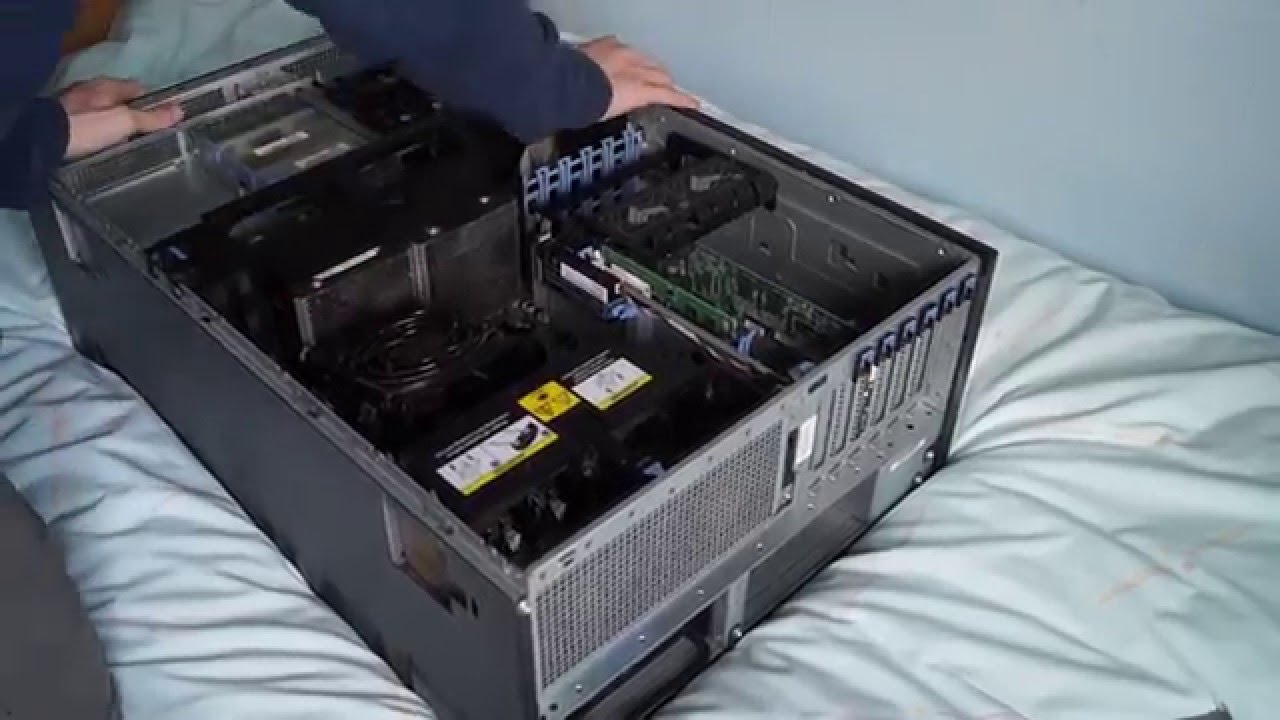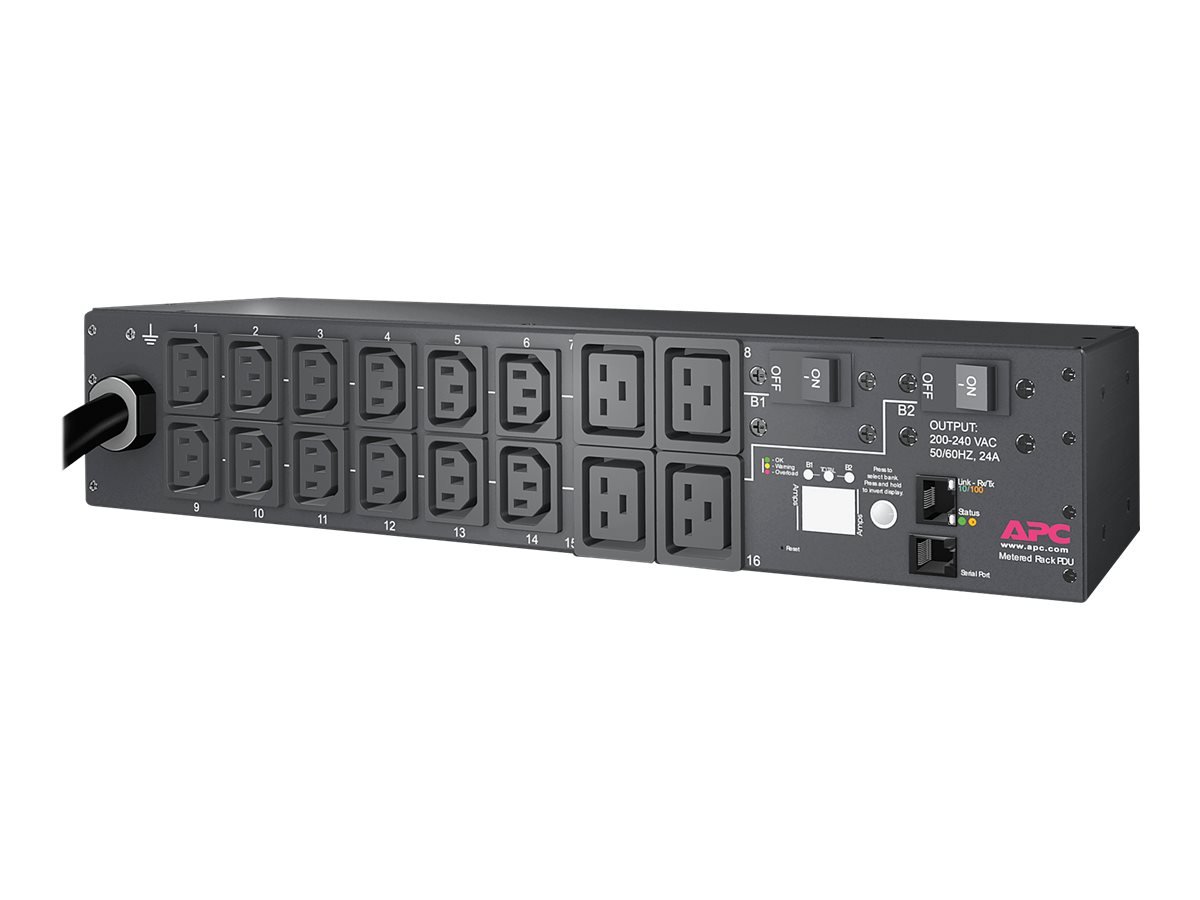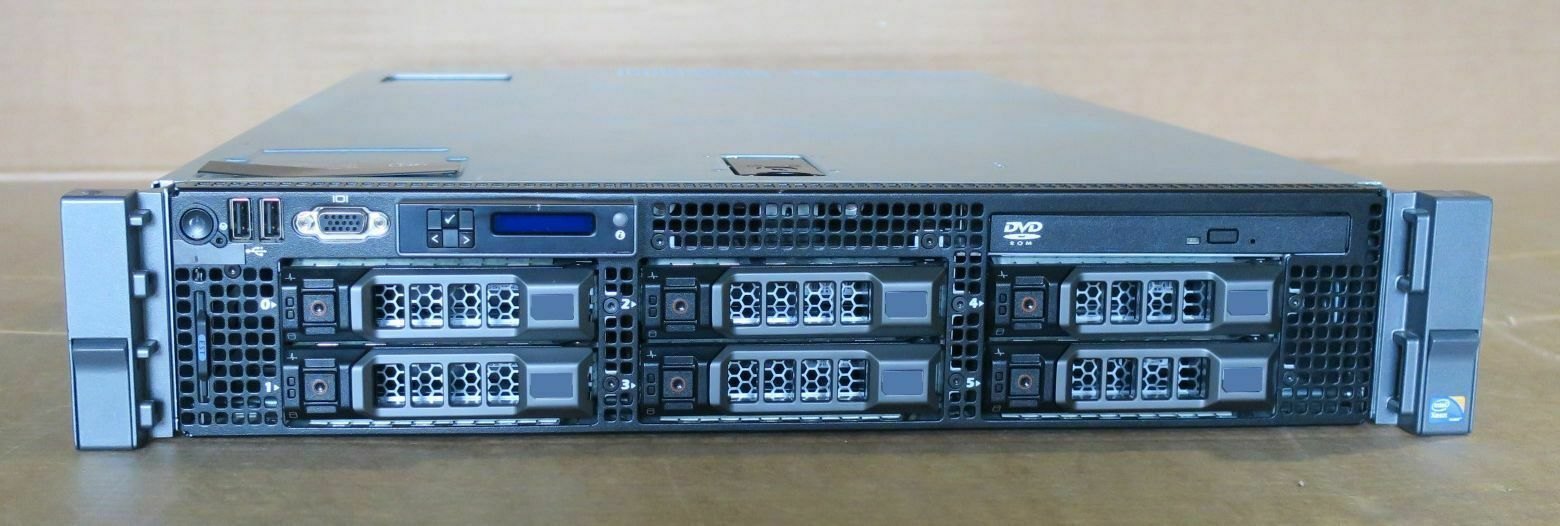Introduction
Welcome to our guide on how much space is required for a Dell server rack. As companies increasingly rely on technology to store and manage their data, server racks play a crucial role in housing and organizing the server infrastructure.
Understanding the space requirements for a Dell server rack is essential to ensure proper installation and maximize efficiency. By determining the right rack size for your Dell servers, you can optimize your data center’s capacity and avoid issues such as inadequate airflow or insufficient room for future expansion.
In this article, we will delve into the standard rack sizes for Dell servers and explore their space requirements based on their unit (U) measurement. We will highlight the rack space requirements for 1U, 2U, 3U, and 4U servers, providing you with a comprehensive understanding of the space needed for your Dell server infrastructure.
It’s important to note that the information provided here is specific to Dell servers, but the concepts can be applied to other server brands as well. Whether you are setting up a small-scale data center or expanding an existing one, this guide will assist you in determining the appropriate rack size for your Dell server equipment.
Now, let’s dive into the world of server rack sizes and discover the space requirements for Dell servers of different form factors.
Understanding Server Rack Sizes
Before we explore the specific rack space requirements for Dell servers, let’s first understand the concept of server rack sizes. A server rack is a standardized framework specifically designed to house and organize servers, network equipment, and other related hardware in a data center or server room.
Server racks are measured in terms of rack units (U), which represents the vertical space occupied by the equipment. One rack unit is equivalent to 1.75 inches (44.45 mm) in height. This unit of measurement allows for easy calculation and consistency when determining the space requirements for servers and other rack-mounted equipment.
Server rack sizes typically range from 1U to 42U, with larger racks available for specialized applications. The height of the rack determines the number of server units it can accommodate vertically. The width and depth of the rack are typically standardized to ensure compatibility with various server and networking equipment.
It’s crucial to select the appropriate rack size based on your specific requirements. Consider factors such as the number of servers you need to accommodate, future expansion plans, and any additional networking or storage equipment that will be housed within the rack.
Additionally, it’s essential to take into account the airflow and cooling requirements of the servers. Sufficient space between servers and proper ventilation within the rack are vital to maintain optimal operating temperatures and prevent hardware failures due to overheating.
By understanding the different server rack sizes and their significance, you can make informed decisions when selecting a rack for your Dell servers. In the next sections, we will explore the specific rack space requirements for Dell servers of various unit sizes to help you choose the right rack for your infrastructure.
Standard Rack Sizes for Dell Servers
When it comes to Dell servers, they are designed to fit into standard server racks available in the market. Dell offers a range of server models that come in various form factors, and their space requirements depend on the number of rack units (U) they occupy.
The most common rack sizes for Dell servers range from 1U to 4U. Here’s a breakdown of the space requirements for these standard rack sizes:
- 1U Dell Server Rack Space Requirements: A 1U server takes up 1.75 inches (44.45 mm) in height. These compact servers are ideal for organizations with limited space or who need to deploy a large number of servers in a small rack. They offer a balance of performance and density.
- 2U Dell Server Rack Space Requirements: A 2U server occupies 3.5 inches (88.9 mm) in height. These servers provide more room for additional components and offer increased processing power and storage capacity compared to 1U servers.
- 3U Dell Server Rack Space Requirements: A 3U server takes up 5.25 inches (133.35 mm) in height. These servers offer even more flexibility and scalability with additional space for expansion cards, more hard drives, or other peripherals.
- 4U Dell Server Rack Space Requirements: A 4U server occupies 7 inches (177.8 mm) in height. These servers are designed for high-performance computing and storage-intensive applications. They offer ample space for multiple processors, high-capacity storage drives, and specialized hardware.
It’s important to consider the specific Dell server model and its associated space requirements when selecting a rack size. Some servers may have custom form factors or additional components that require more space than the standard U measurement suggests.
When planning your server infrastructure, factor in the space needed for cable management and airflow within the rack. Leaving enough room for proper cable routing and ventilation is crucial to optimize server performance and minimize the risk of overheating.
Now that you have a clear understanding of the standard rack sizes for Dell servers let’s explore the specific space requirements for 1U, 2U, 3U, and 4U Dell servers in the following sections.
1U Dell Server Rack Space Requirements
1U Dell servers are compact and space-efficient, making them ideal for organizations with limited rack space or those looking to maximize the number of servers in a rack. These servers typically occupy a height of 1.75 inches (44.45 mm) within a server rack.
When planning for a 1U Dell server, it’s essential to consider the overall depth and width of the server rack to ensure compatibility. Most standard server racks have a depth of around 36 inches (914.4 mm) and a width of around 19 inches (482.6 mm), allowing ample space for installing and managing the servers.
While 1U servers are space-efficient, they still offer robust performance capabilities. They can accommodate a single processor, a limited number of memory slots, and a small number of drive bays, depending on the specific Dell server model.
When selecting a server rack for 1U Dell servers, it’s crucial to consider the future scalability and expansion plans. Leave sufficient space between the servers to ensure proper airflow and cooling. Additionally, allocate space for cable management to maintain a tidy and organized rack infrastructure.
Proper cable management is particularly important in 1U server configurations, as the limited space can quickly become cluttered and lead to airflow restrictions. Utilize cable management options such as cable management arms, cable management panels, and cable routing accessories to keep the cables organized and prevent any interference with server components.
Overall, the space requirements for 1U Dell servers are relatively low, but it’s important to plan accordingly to ensure optimal performance and scalability. Consider factors such as future growth, ventilation, cable management, and compatibility with other rack-mounted equipment when selecting a server rack for your 1U Dell servers.
Next, let’s explore the space requirements for 2U Dell servers and understand the considerations for their installation.
2U Dell Server Rack Space Requirements
2U Dell servers are the next step up in terms of size and performance compared to 1U servers. These servers occupy a height of 3.5 inches (88.9 mm) within a server rack, providing more room for additional components and increased processing power.
When planning for 2U Dell servers, it’s important to ensure that the server rack can accommodate their height and provide adequate airflow for cooling. Most standard server racks have a depth of around 36 inches (914.4 mm) and a width of around 19 inches (482.6 mm), which is typically sufficient for installing and managing 2U servers.
2U servers offer more flexibility and scalability compared to their 1U counterparts. They can accommodate bigger heatsinks, additional processors, and more memory slots. Furthermore, 2U Dell servers generally provide more drive bays for increased storage capacity.
When selecting a server rack for 2U Dell servers, consider the overall growth and expansion plans for your infrastructure. Leaving enough space between the servers and utilizing proper cable management techniques are crucial for maintaining proper airflow and preventing cable clutter.
Since 2U servers have more space for components, proper cable management becomes even more critical to ensure optimal airflow and efficient cooling. Utilize cable management arms, routing accessories, and cable management panels to keep the cables organized and out of the airflow path.
It’s also important to consider future expansion when selecting a rack for 2U Dell servers. Ensure that the rack has enough available space and compatibility with additional equipment that may be needed in the future.
Overall, 2U Dell servers offer a balance between performance, scalability, and space efficiency. By considering factors such as cooling, cable management, and future growth, you can ensure that your 2U Dell servers are housed in an optimized and well-organized server rack.
Now, let’s move on to the space requirements for 3U Dell servers and explore the considerations for their installation and configuration.
3U Dell Server Rack Space Requirements
3U Dell servers offer increased space and flexibility compared to their 2U and 1U counterparts, making them suitable for organizations with higher processing and storage demands. These servers occupy a height of 5.25 inches (133.35 mm) within a server rack.
When planning for 3U Dell servers, it’s important to ensure that the server rack has enough vertical space to accommodate their height. Most standard server racks have a depth of around 36 inches (914.4 mm) and a width of around 19 inches (482.6 mm), which should provide ample room for installing and managing 3U servers.
3U servers offer increased scalability and expansion options compared to their smaller counterparts. They provide more room for additional expansion cards, extending the number of memory slots, and accommodating a greater number of storage drives.
When selecting a server rack for 3U Dell servers, consider the overall growth potential and future expansion plans for your infrastructure. Ensure that the rack has enough available space and compatibility with any additional equipment that may be required.
Proper airflow and cooling are crucial for 3U Dell servers due to their larger size and increased component density. Ensure that there is ample space between the servers and utilize proper cable management techniques to prevent cable clutter and airflow restrictions.
Since 3U servers have more internal components and larger heatsinks, it’s important to plan for proper cable management from the outset. Use cable management arms, routing accessories, and panels to organize the cables and maintain optimal airflow and cooling efficiency.
When housing 3U Dell servers in a server rack, keep in mind the overall distribution of weight and load-bearing capacity. Ensure that the server rack is sturdy and can support the weight of the servers and any additional equipment.
In summary, 3U Dell servers offer a balance between space efficiency and expandability. By considering factors such as cooling, cable management, and future growth, you can ensure that your 3U Dell servers are housed in a well-suited server rack that allows for optimal performance and scalability.
Next, we will explore the space requirements for 4U Dell servers and the considerations involved in their installation and configuration.
4U Dell Server Rack Space Requirements
4U Dell servers are designed to meet the demands of high-performance computing and storage-intensive applications. These servers occupy a height of 7 inches (177.8 mm) within a server rack, providing ample room for multiple processors, high-capacity storage drives, and specialized hardware.
When planning for 4U Dell servers, it’s important to ensure that the server rack has enough vertical space to accommodate their height. Most standard server racks have a depth of around 36 inches (914.4 mm) and a width of around 19 inches (482.6 mm), which should provide sufficient room for installing and managing 4U servers.
4U servers offer extensive scalability and expansion options compared to servers with smaller form factors. They can accommodate multiple processors, a high number of memory slots, and a large quantity of storage drives, making them well-suited for demanding workloads and data-intensive applications.
When selecting a server rack for 4U Dell servers, consider the future growth potential and expansion plans for your infrastructure. Ensure that the rack has enough available space and compatibility with any additional equipment that may be required.
Given the larger size and higher component density of 4U servers, proper airflow and cooling become even more critical. Leave sufficient space between servers to allow for proper ventilation and utilize effective cable management techniques to prevent obstructing the airflow and creating hotspots.
Proper cable management is essential for 4U Dell servers to maintain optimal airflow and cooling efficiency. Utilize cable management arms, routing accessories, and panels to organize the cables and prevent any potential obstructions or tangles.
When housing 4U Dell servers in a server rack, ensure that the rack is sturdy and can effectively support the weight of the servers and any additional equipment. Consider the load-bearing capacity and distribution of weight within the rack to prevent any structural issues or damage.
In summary, 4U Dell servers offer significant storage capacity and processing power for high-performance computing applications. By considering factors such as cooling, cable management, and future growth, you can ensure that your 4U Dell servers are housed in an appropriate server rack that maximizes performance and scalability.
Next, we will discuss the key factors to consider when determining rack space requirements for Dell servers.
Factors to Consider When Determining Rack Space Requirements
When determining the rack space requirements for Dell servers, there are several factors that you should consider to ensure optimal installation and future scalability. These factors include:
- Number of Servers: Assess the number of servers you need to accommodate in your rack. Consider both the current requirements and potential growth in the future. This will help you determine the appropriate rack size and capacity.
- Form Factor: Different Dell server models come in various form factors, such as 1U, 2U, 3U, or 4U. Understand the form factor of your servers to determine the amount of vertical space they will occupy within the rack.
- Future Expansion: Consider your future expansion plans. Allow for additional rack units to accommodate any new servers or equipment you may add later, ensuring scalability and avoiding the need for rack replacements.
- Cabling and Cable Management: Factor in the space needed for cabling within the rack. Adequate space for cable management is crucial to maintain airflow, reduce cable clutter, and simplify maintenance and troubleshooting.
- Airflow and Cooling: Ensure that there is sufficient space and airflow within the rack to maintain proper cooling for the servers. Proper airflow prevents overheating and ensures optimal performance and reliability.
- Compatibility with Other Equipment: Consider any additional network switches, storage devices, or other equipment that will be housed within the rack. Ensure that the rack has enough space and compatibility for all the necessary components.
- Rack Depth and Width: Assess the depth and width of the rack to ensure compatibility with Dell servers and any other equipment you plan to install. Consider the physical dimensions of the server and the space it requires for proper installation and maintenance.
- Weight Distribution: Take into account the weight of the servers and equipment to ensure that the rack can safely support the load. Distribute the weight evenly within the rack to maintain stability and prevent any structural issues.
By considering these factors, you can accurately determine the rack space requirements for your Dell servers. This will ensure optimal installation, future scalability, and efficient management of your server infrastructure.
Now that you have a comprehensive understanding of the factors involved, you can confidently select the right rack size and effectively manage your Dell servers.
Conclusion
Selecting the appropriate rack size and understanding the space requirements for Dell servers is crucial for proper installation and efficient management of your server infrastructure. By considering factors such as the number of servers, form factor, future expansion plans, cabling, cooling, compatibility, rack dimensions, and weight distribution, you can ensure optimal performance, scalability, and maintenance of your Dell servers.
Whether you are configuring a small-scale data center or expanding an existing one, the understanding of server rack sizes and their associated space requirements allows you to make informed decisions. This knowledge enables you to maximize your data center’s capacity, promote proper airflow and cooling, and facilitate a well-organized and manageable server environment.
Dell offers a range of server models with different form factors, such as 1U, 2U, 3U, and 4U servers. Each form factor has specific space requirements, allowing you to choose the most suitable rack size based on your needs and future growth plans.
Remember to plan for future scalability, allowing for additional rack units and considering factors like cable management, proper airflow, and compatibility with other equipment. These considerations will help you create an optimized and well-organized server rack infrastructure.
In conclusion, understanding the space requirements for Dell server racks is essential for efficient server management. By considering all the factors involved, you can ensure proper installation, scalability, and optimal performance of your Dell servers. Now that you have the knowledge, you can confidently select the right rack size and create a robust server infrastructure that meets your organization’s needs.









